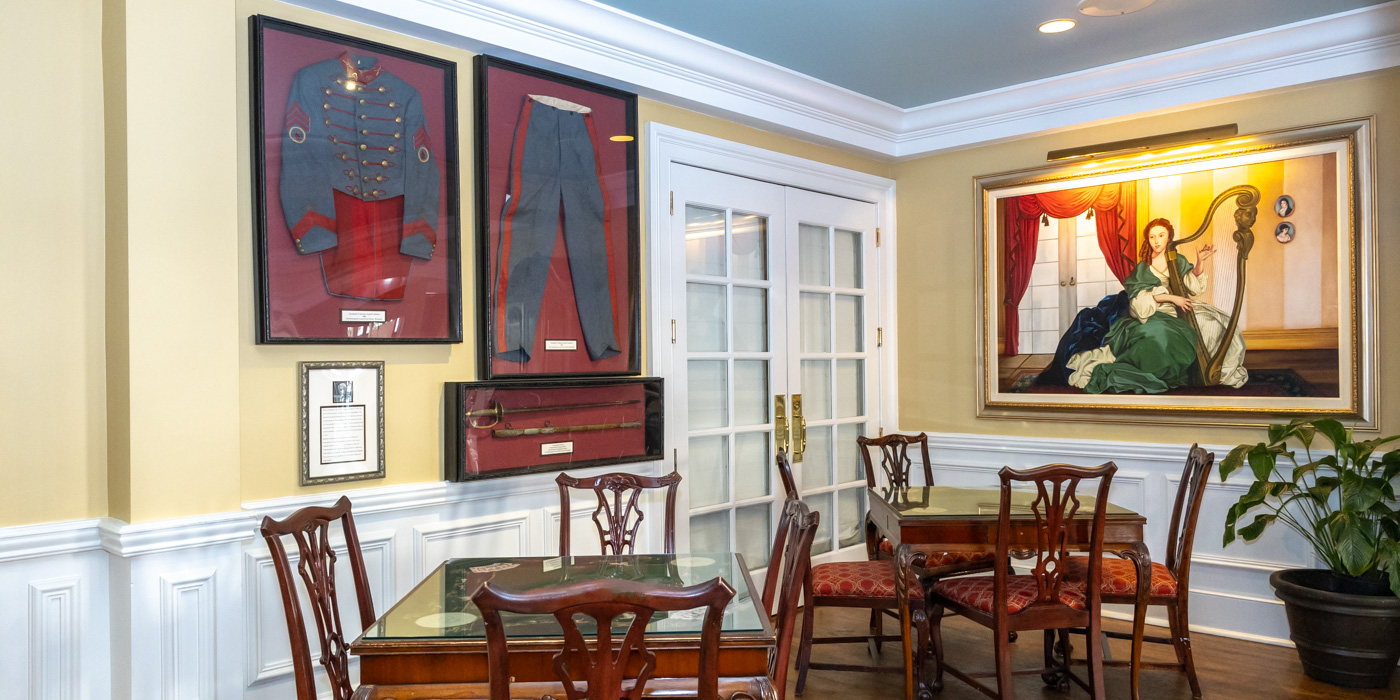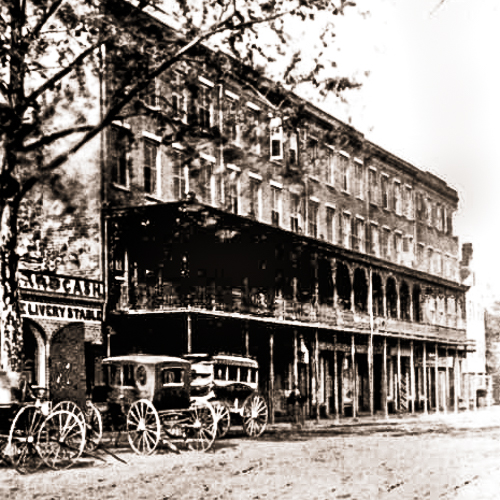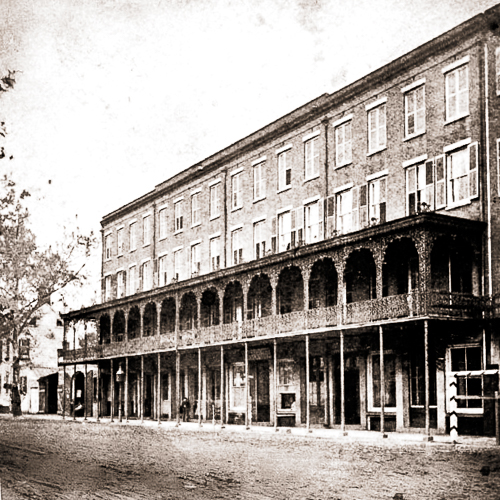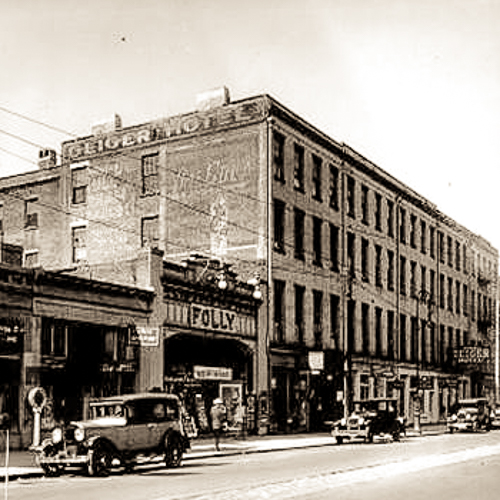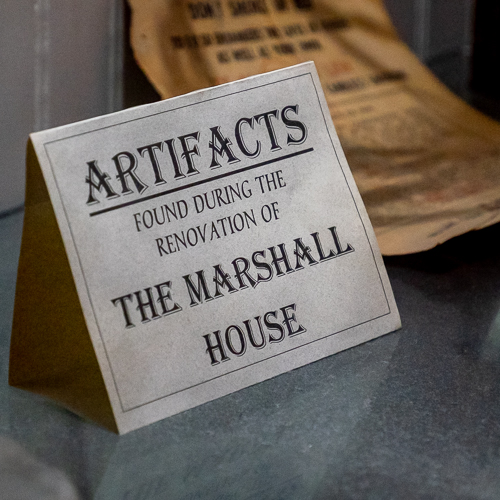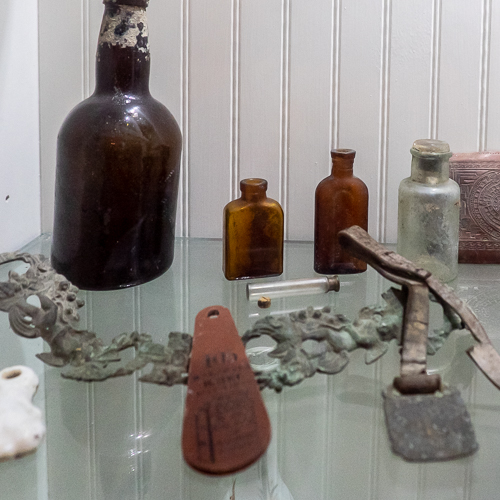>>> Civil War Era Display on 3rd Floor
In 1864-65, The Marshall House was occupied by Union troops led by General William Tecumseh Sherman. The building was used as a Union hospital for wounded soldiers until the end of the Civil War. Guests are invited to visit our 3rd floor and view a collection of original prints, newspapers, letters, and documents reflecting Savannah’s experience during the Civil War. Tour the 3rd Floor
The History of The Marshall House
One of the Oldest Hotels in Savannah
During the railroad boom of the 1840s and 1850s Savannah doubled in size and population. Seeing a real need for accommodations and housing, business-woman Mary Marshall developed several properties in Savannah, most notably the iconic Marshall House hotel in 1851. Mary Marshall and her estate leased and collected rents from The Marshall House until 1914.
The hotel’s colorful history includes roles as a hospital during the Yellow Fever Epidemics in the mid-1800s, and as a Union hospital during the final months of the Civil War.
The Marshall House was also home to Joel Chandler Harris, author of the famous Uncle Remus Stories during the Reconstruction Period. For economic and structural reasons, The Marshall House was closed in 1957. The 2nd, 3rd, and 4th floors were abandoned, but the ground floor was maintained for various shopkeepers and stores until 1998.
In 1999, The Marshall House was extensively restored, and once again became a Savannah fixture. Great efforts were taken to ensure the hallmarks of the historic hotel were preserved or recreated: including the Philadelphia Pressed Brick on the façade and the Savannah Grey Brick throughout, original staircases (some of the spindles and accents have been recreated), original wood floors, fireplaces, brick walls, the doors to each guest room, and several claw foot tubs dating back to 1880. The veranda and gas lights were reproduced in the likeness of the original features. The Courtyard Atrium was encased with a glass ceiling to give a sense of the area’s previous use as a courtyard. Artifacts found during the restoration are encased in display cabinets on the second and third floor.
Awards & Honors
Upon re-opening, The Marshall House received numerous preservation awards, including awards from the Georgia Trust for Historic Preservation and the Historic Savannah Foundation. The Marshall House has since been featured on Travel Channel’s Great Hotels, Good Morning America and Fox News. It’s also the recipient of multiple “Best of Savannah” awards, and TripAdvisor Certificates of Excellence.
Timeline of The Marshall House's History
1851-1895
- 1851: Mary L. Marshall opens The Marshall House on Broughton Street in Savannah's premier shopping district.
- 1857: Ralph Meldrim, proprietor of The Marshall House, erects an iron veranda in front of the property 120 feet in length and 12 feet wide and high. The veranda becomes one of the signature features of The Marshall House.
- 1859: Having been fully renovated, repainted, and refurbished, the hotel reopens to the public.
- 1864-1865: The hotel is occupied by Union troops led by General William Tecumseh Sherman. The building was used as a Union hospital for wounded soldiers until the end of the Civil War.
- 1867: Marshall Hose Company (Volunteer Fire Department) was founded to protect The Marshall House and other properties in Savannah.
- 1880: The adjoining building, known as the “Florida House,” was annexed as part of The Marshall House, increasing the hotel's capacity by about one third.
- 1895: Hotel closes.
1899 - 1999
- 1899: Hotel reopens as The Marshall House and features electric lights and hot and cold baths on every floor.
- 1933: Herbert W. Gilbert, a prominent hotel and real estate man from Jacksonville, leases the building and changes the name to the Gilbert Hotel.
- 1941: Herbert Gilbert sells the hotel and eight stores. The property is now steam heated and features a lobby, dining room, living room, reading room, 66 guest rooms, one suite, an apartment, and six storage rooms.
- 1946: The Marshall House reopens with a complete renovation.
- 1957: The 106-year-old Marshall House closes. Extensive alterations to put the hotel in full compliance with state fire laws were not possible on a short-term lease.
- 1998: Renovations to The Marshall House begin once again.
- 1999: The Marshall House, having been fully restored and renovated, reopens to the public as Savannah's oldest hotel.



About Mary Marshall
As you enter the lobby at The Marshall House, you’ll see an oil painting of Mary Marshall behind the reception desk. This portrait is our most treasured antique acquired from the estate of Jim Williams, the central figure in John Berendt’s book Midnight in the Garden of Good and Evil. Completed in 1830 by artist Peter Laurens, it depicts Mrs. Marshall in her early forties.
Mary Marshall was a prominent figure through much of Savannah’s turbulent history. She was born during the last year of the Revolution, and died at the age of 93 during the last days of Reconstruction in the South. At her death in 1877, she was considered very successful in Savannah’s financial and social circles.
Mary’s grandparents settled in Savannah during the early days of the founding of the colony. During the American Revolution, she had relatives fighting on both sides during the Siege of Savannah. Her father, Gabriel Leaver, was a cabinetmaker who shrewdly acquired several choice pieces of property in Savannah before his death in 1795.
Upon inheriting her father’s estate and his business acumen, Mary Marshall continued to buy and develop land, growing her wealth tenfold during her lifetime. Along with The Marshall House, there are two other notable Mary Marshall landmarks within a short walk. Her double-tenement house sits behind the hotel on Oglethorpe Square, and the iconic Marshall Row lies on Oglethorpe Street across from Colonial Park Cemetery.

